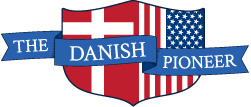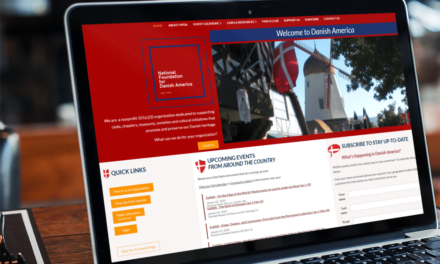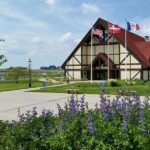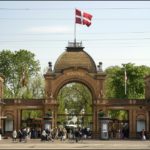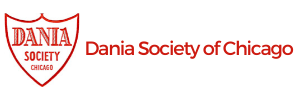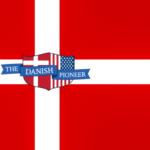
New Museum of Danish America Exhibit Runs Through September 1, 2014 in Elk Horn, Iowa
NEW EXHIBITION “SCHLESWIG-HOLSTEIN: TURMOIL ON THE DANISH-GERMAN BORDER” ON VIEW AT THE MUSEUM OF DANISH AMERICA THROUGH SEPTEMBER 1, 2014
The Museum of Danish America, 2212 Washington Street in Elk Horn, Iowa, is pleased to present a new exhibition exploring the history of Schleswig-Holstein on the border between Denmark and Germany. For centuries, the duchies of Schleswig and Holstein (in Danish, Slesvig and Holsten) have been a bridge between Scandinavia and continental Europe. Located on the southern portion of the Jutland peninsula, the region is home to Danish, German, and Frisian peoples. Over time, Schleswig-Holstein became an emblem for power struggles between larger European nations, and differing ideas of nationalism influenced the Jutland peninsula. Events in this small corner of the world have re-shaped the boundaries between nations and inspired waves of immigrants to the United States.
The two Schleswig wars, in 1848 and in 1864, had lasting impacts on immigration to the United States. A wave of revolutionary movements swept across Europe in 1848, including the German states and surrounding regions. When the political leaders failed to achieve their reforms, many became political exiles or chose to seek a greater freedom in the United States. The professional teachers, journalists, and lawyers who settled in the U.S. are often called the “48ers”, as they brought their political ideals to their new country and many continued to advocate for liberal values.
The Dano-Prussian War of 1864 was a decisive defeat for Denmark. The major loss of territory contributed to a nation-wide re-evaluation of Danish identity, as a once-dominant regional empire was now a relatively peripheral entity. For Danes who found themselves living under German rule, pro-German policies and conscription into the German military often proved to be the push to emigrate. Within the history of Danish immigration to the United States, the wave of Danes from Schleswig after 1864 is a notably large group from a single region.
By 1890, over half of the immigrants from Schleswig – approximately 19,000 people living in the United States at the time – were living in Iowa. Their legacy is seen in the Iowa towns named “Schleswig,” Holstein”, and “Schley”, all settled by German immigrants, as well as Fredsville (“peace-ville”) settled by Danes. Within the Danish immigrant communities of Elk Horn, Kimballton, Exira, and neighboring towns, many Danish-American residents trace their ancestry to Danish immigrants from Schleswig.
“Schleswig-Holstein: Turmoil on the Danish-German Border” explores a single region whose history has affected events and individuals around the world. For example, Thorvald G. Muller immigrated to the United States in 1884 with his family. Most of his adult life he lived in Kimballton, Iowa together with his wife, Mette, and their children. In 1920 a plebiscite (popular vote) determined whether Schleswig would belong to Denmark or Germany. In response to the outcome of the plebiscite, Thorvald travelled back to Denmark to witness the northernmost part of Schleswig being reunited with Denmark. During both World Wars, Thorvald G. Muller was concerned with the condition of Danes in Schleswig and he sent letters and parcels of food and clothing to them. In 1949 he was awarded with the “King Christian Medal of Liberation” because of his actions.
Another immigration story illustrates the different choices that individuals made, even within the same family. George Everson, born in 1850, immigrated to the United States in 1870 because of the outcome of the war of 1864. He came back to Denmark in 1873 because his father had died and he wanted to take care of his family. He stayed in Denmark for seven years and served time in the Danish army during his stay. George went back the United States in 1880 and brought with him Julia Jensine Holst whom he married in 1882. His wife and daughters went to Denmark for a year in 1890. George arranged for the rest of their family members to travel to the United States together with them when they went back. However, his youngest brother was brought up under German rule and had become more German-minded than Danish-minded; he enlisted the German army and stayed in Germany the rest of his life.
“Schleswig-Holstein: Turmoil on the Danish-German Border” is supported by a grant from Humanities Iowa and the National Endowment for the Humanities. The views and opinions expressed by this exhibit do not necessarily reflect those of Humanities Iowa or the National Endowment for the Humanities. Additional support for the traveling version of this exhibit is provided by the Albert V. Ravenholt Fund and the Danish Sisterhood Lodge #15 (Wisconsin).
For more information, please visit www.danishmuseum.org.
=============================================================================
ABOUT THE DANISH PIONEER NEWSPAPER – SINCE 1872 – ENGLISH & DANISH ARTICLES
THE DANISH PIONEER NEWSPAPER IN ACTION: Did you know that The Danish Pioneer staff, editors, photographers columnists and writers help readers discover unique travel destinations, interesting films, concerts, sporting events, delicious restaurants, special birthdays and scholarship opportunities in the USA, Canada, Denmark & Scandinavia? Come discover more in 2014.
THE DANISH PIONEER NEWSPAPER WAS FOUNDED IN OMAHA, NEBRASKA IN 1872 AND TODAY IS STILL PUBLISHED JUST OUTSIDE CHICAGO, ILLINOIS. Did you know by supporting The Danish Pioneer Newspaper’s print edition, we are able to offer the bonus of our colorful, exciting website. Please support The Danish Pioneer Newspaper. Subscriptions to our print edition are economical, and you receive 26 issues per year including the extra-large, extra-special holiday issue. Subscriptions and advertisements – like annual donations to ethnic institutions or memberships to clubs, lodges and organizations – help The Danish Pioneer Newspaper staff to preserve and to support the Danish-American ethnic press in addition to allowing us to promote the Danish and Scandinavian culture, communities, heritage and traditions in the USA and North America. Please subscribe today or give The Danish Pioneer Newspaper as a gift subscription to a friend or relative. Visit http://www.thedanishpioneer.com/subscribe/
